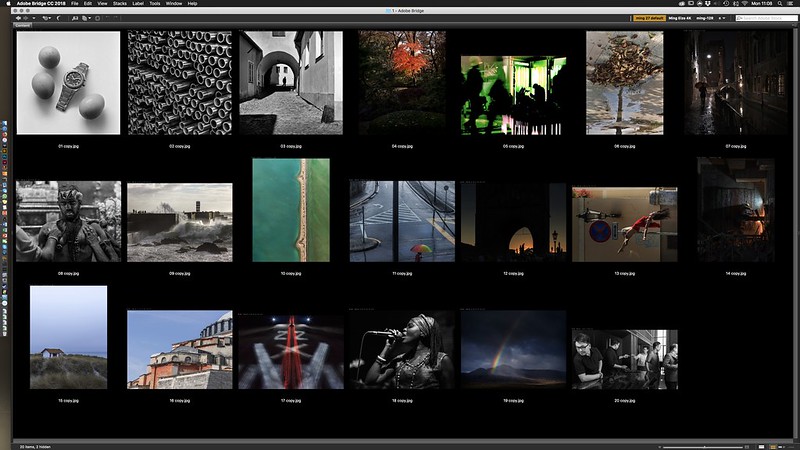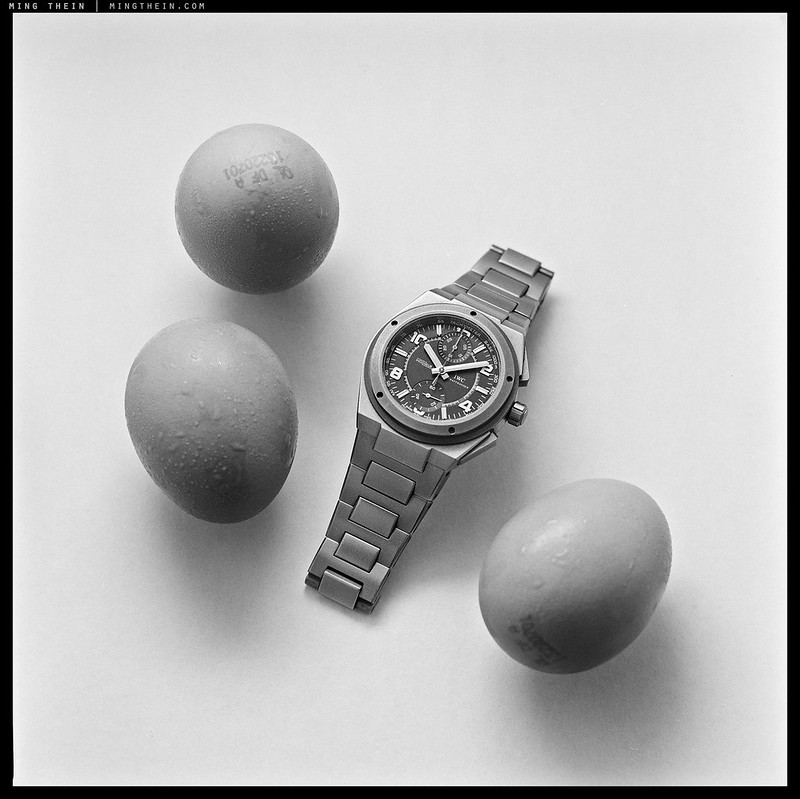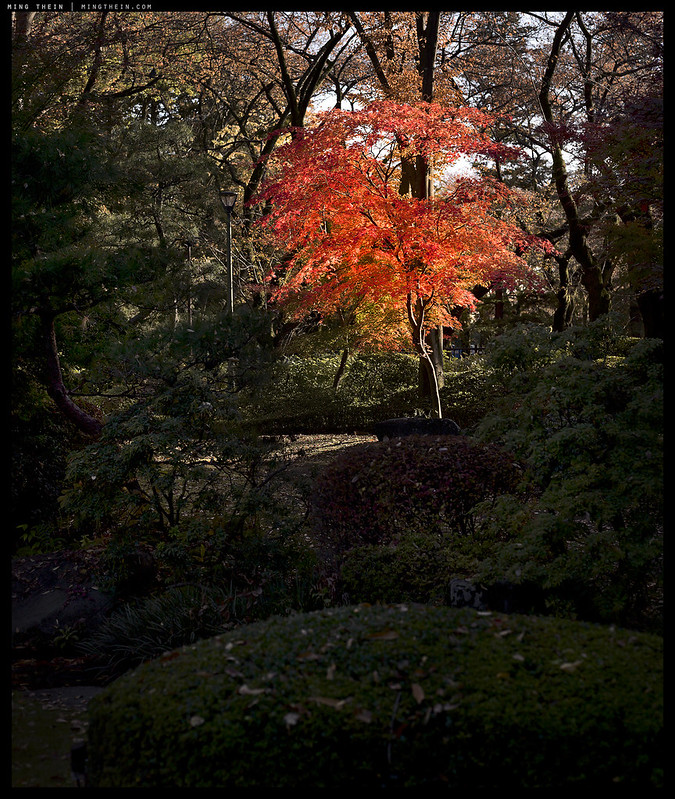
Introduction
Today is the first of a series of five posts from a long-form feature written for Medium Format Magazine earlier in the year (some of you may be familiar with my philosophical musings from my column in the magazine In Pursuit of Transparency). This series will be a bit different to anything I’ve done before on the site; usually we tend to focus on either a sequence of images with minimal commentary – in the form of a photoessay – or detailed discourse around a single topic. This series of images are from personally significant points in my medium format shooting career. They have had to pass curation not solely for being visually interesting and having a self-contained narrative, but also having a back story that is often more interesting than the photograph itself – and without the creator to tell the story, there’s no way you’d get to hear it.
Sometimes it’s around an idea or a particular inspiration; sometimes it’s around the execution; sometimes it’s about serendipity. There’s planning and there’s luck; there’s preparedness and there’s the mad scramble. There’s the behind the scenes peek into the chaotic life that’s necessary of a modern photographer – much less of it is about making pictures than building relationships. More often than not there are stories about the people involved – subject, client, production. It has not been easy to select these as there is always a strong emotional attachment to your favourite images – and there tend to be a lot of them if you’re prolific. It’s almost as bad as asking a parent to select their favourite child.
Let me know what you think. If the response from these posts is positive, I’d like to do more of this in the future…MT

Proof of concept
My first medium format experience was actually digital, and more than 15 years ago at this point. I remember a very early CFV back proudly wielded by an older lady student of mine. I also remember it not working very well, and me hating the lack of fluidity of the process, the inversion of the waist level finder, and the difficulty of finding enough shutter speed in the warm but fading afternoon light of her apartment as we explored available light portraiture. The subject – her very beautiful (and same age as myself) daughter. Needless to say, being single and not a corpse, I persisted with the frustration until I was happy with the results. I remember covering up my unfamiliarity with the equipment by taking inordinate care to compose and focus and talk through the use of supporting elements in the room to create a story; I remember not shooting more than 20 frames in total. I would probably have persisted a bit longer and become more fluid, but the back decided to quit and no combination of swearing, hammers and battery-pulling seemed to revive it. Needless to say, that afternoon left something of an impression in my youthful mind.
It is somewhat fitting then that my next encounter was once again with a reversed waist-level-finder Hasselblad, in early 2013. I wanted to experiment with larger formats to see how the rendering style would change, and if I could somehow use that creatively. I pushed through the intuitiveness of left-right reversal and looking down to see in front of me, and eventually it became second nature – to this day when using a tilting LCD, I often rotate the camera in the wrong direction.
The watch and eggs were part of a challenge set by myself in a direct response to an unpleasant person on my site who suggested that I was a ‘young turk full of hubris’ who relied on digital and Photoshop – I shot one roll of 12 completely different compositions of watches, all using flash (and calculated by guide number since the camera was 100% manual and made more challenging by the use of diffusers, bounces and a whole load of sometimes temperamental PC sync cable connections), and posted the contact sheets. The film was of course developed and scanned myself. I’m proud to say I felt vindicated with 11/12 good frames – one had to be repeated as not all flashes fired on that frame due to a bad connector. The images subsequently lived on in a watch magazine to the theme of contrasts.

Texture
I increasingly began to turn towards medium format film for professional work and clients who wanted something a little bit different; there was definitely something special about the tonal rendition of Acros and something natural about the way longer focal lengths render*. There was sufficient work to justify the acquisition of a full set of lenses and a backup body and workshop manual – to the point I was doing minor mechanical repairs myself. In any case, it was much easier than working inside a watch thanks to the larger scale.
*It has to do with lens design and both geometric and projection distortion – a much longer topic for another time and covered previously on my site (https://blog.mingthein.com/2019/05/20/repost-format-strengths-and-why-different-sized-media-render-differently/ )
But I was still shooting a backup set of images with a digital camera, just in case. The stack of pipes destined for a large power station heat exchanger and photographed for a heavy engineering company was the first time there was no digital backup – I shot the entire commission solely on film. For those who are paranoid about card failure and insist on dual slots – you have no idea how easy you have it since there are almost no points of failure compared to your single roll of film (loading, exposure, unloading, developing, handling, scanning etc.) since you can verify the image at every handling step.
This particular composition remains one of my favourites because it feels essential (in the sense of being reduced to the fundamentals, rather than absolutely necessary) in so many ways – a condensed summary of that the client company does in changing a chaotic mass of tubes into something ordered (read the image left to right); tonally rich; heavily stylised yet unmistakably representative of the subject; and as a bonus, being technically satisfying in the execution.

Channelling HC-B
Before the first time I hosted a workshop in Prague in 2013, I spent a few days driving around the smaller and more picturesque towns of the Czech countryside with my brother – himself a keen and competent photographer by day, and doctor by night. The sun was intense, the towns neat and visually rich, the locals were friendly, and the influx of tourists from the Far East had yet to invade – in short, a very relaxing time. He reminded me how bad my manual transmission skills were, I marvelled at the amazing efficiency of our rented Skoda, and we stopped in two places that really imprinted.
The first was a (presumably) cultivated secondary forest full of very tall, but thin-trunked trees; neatly laid out and providing a nicely distributed but not completely uniform array of boles. We hiked for a while under the silent canopies and shot a few frames. One of those would go on to be one of my best-selling prints (Forest I), and the start of an obsession to translate that experience of being in a calm, tranquil forest to a large and transparent print – eventually culminating in 40-plus multi-gigapixel stitches of forests around the world, and a 7ft contact print. But the first frame wasn’t shot with medium format; it was too dark, I had no tripod, and I didn’t own the lens for the perspective I wanted.
The second was the mor intimate vignette you see above – I’ve always thought it felt a lot like the tonescape of Cartier-Bresson’s cyclist or Santorini girl, but with the usual sort of underlying structurural order I prefer. Alas, it must have been siesta time as there were no people about to provide a handy human silhouette, and so I drafted my brother. I don’t know if it adds to the personal significance of this image, but I do remember it cost me the price of a rather tasty weissbier.

At last light
The formal gardens in Japan in autumn (or any season, really, given how distinct they feel) are some of my favourite places to be. There is the organicness of nature; the intricacy and perfection of meticulous care and planning; the rich colors; the tranquil silence (at least in the ones not yet discovered by certain types of tourist). A really good garden feels almost wild; yet that wildlness is obsessively laid out and controlled. In a way, it’s a very Japanese thing that also translates to a lot of their other art forms – that seemingly haphazard, chaotic style of street photography popularised by Araki, Moriyama and co is much harder to execute than it appears.
Peak autumn color tends to come in November or even December (there are websites obsessively dedicated to this) – meaning that we are pretty close to the winter solstice, and the sun is at its lowest. Daylight is short, but your shooting hours are pretty much continuous as the sun is always close to the horizon and casting beautiful shadows. Better still is that weather tends to be crisp and clear, meaning the contrasts and colors are more intense.
We were filming the How To See Ep.2: Tokyo video in one of these gardens and packing up for the afternoon to change locations for the night portion, when I walked around a stand of trees to find one final shaft of sunlight coursing between another stand of trees to precisely hit the only one in the vicinity that still held this incredibly intense burnt orange. I scrambled to unpack the camera and get off a frame; anybody who’s used a CFV-39 will also know just how slow the back is to turn on, how limited your ISO range is, and how sensitive it is to correct focus and camera shake (especially when held vertically at 150mm). It also isn’t the most informative when it comes to image review and verification of focus.
Somehow I got lucky and managed to nail all of those things in the couple of minutes the light held, leaving me a few final moments to sear that feeling to memory. I see it every day because it lives as a large canvas print on my bedroom wall; when the light hits it right, I’m transported back to that evening in Tokyo.
__________________
First published in Medium Format Magazine, June 2019. Reproduced with permission.
__________________
Visit the Teaching Store to up your photographic game – including workshop videos, and the individual Email School of Photography. You can also support the site by purchasing from B&H and Amazon – thanks!
We are also on Facebook and there is a curated reader Flickr pool.
Images and content copyright Ming Thein | mingthein.com 2012 onwards unless otherwise stated. All rights reserved





I paused when I saw this post – trying to absorb it, to collect my thoughts, to assemble my ideas as to how to respond. Then decided – why? – just give the “Reader’s Digest” version, and condense it all down to one sentence. Here it is.
Unusually for me – almost lost for words – this post underscores the genius of the man behind the camera – a rather self effacing, self deprecating, overly sensitive genius – but one whose “feed” has been enriching my life and my knowledge of photography since the day I first stumbled upon this blog – thank God or Karma or whoever, that he gave up engineering to become a photographer!
Okay, now I’m blushing…there must be somebody else you’re referring to, surely?
And I”m back in engineering again these days (well, of the very small kind, at any rate! 🙂 )
I enjoyed Part 1 very much and am looking forward to Part 2.
Yes definitely, backstory is welcome, I think most of us here are interested in the process leading up to the photo, as well as the photo itself.
The thinking process, I hope, and not the gear 😉
Of course, I think there are plenty of sites, people talking about the gear these days, and not enough talking about the process.
I’d be interested in gear in the context of how it fits into the process, for instance I think you’ve mentioned in the past that you like shooting with Zeiss because of the transparency it brings, but again, it’s only a part of the process.
And there are some practicalities that are part of the process (e.g. moving subjects) that make manual focus (or worse, manual focus and medium format) gear too risky for situations where you must get the shot. Of late I’m just using light straightforward hardware that does the job and gets out of the way…in other words, less process.
I’ve noticed when I use my vintage gear (such as the Contax lenses), that does hold true, but I suppose part of the process is knowing your gear well enough that you know what you can and can’t do, as opposed to acquiring more.
How do you find your updated process SOOC with the Nikon Z7, compared to your PS Workflow videos? I have to say that Workflows I, II, & III have been extremely helpful for expanding my ability to achieve the photos I see in my mind. But there is always an extra step post capture to get the result I want.
The results are closest to Workflow III, and the accompanying ACR profiles may be interchanged directly into that workflow if you find yourself needing something beyond what the JPEG delivers. I’d say it’s cut down my post processing time by a significant amount…at least half, with little practical impact on quality.
Hi Ming, it’s said a picture says more than a thousand words – and yours are such a rich experience to view.
However, it is great to be invited into the machineroom of considerations, feelings, technical obstacles,
or hearing how you mature ideas at your refined level of accomplishment…
Thanks for sharing all these years,
Michael
My pleasure – a picture says a thousand words about the subject and things related to it, but nothing about the making of, or the ‘non sequiturs’ surrounding it – and that was the purpose of this series…
More, please.
To come soon! 🙂
Nice photos and stories…
Thanks!
This is brilliant and in fact, makes me remember each image much better as if recalling one of my own, due to the story behind it.
I suppose, a photo with story adds much more depth and impression, even if it is not necessarily a superbly executed one.
Thanks – though we try to put everything into the frame, sometimes there are totally unrelated things there is no way to include…
Dear Ming, Art makes far more sense and is more enjoyable when examined in context. By its very nature of capturing a moment photographs grow a lot on us when we know the reaction or the intention of the artist. It makes your work far more human. Do keep the stories coming!
Thank you!